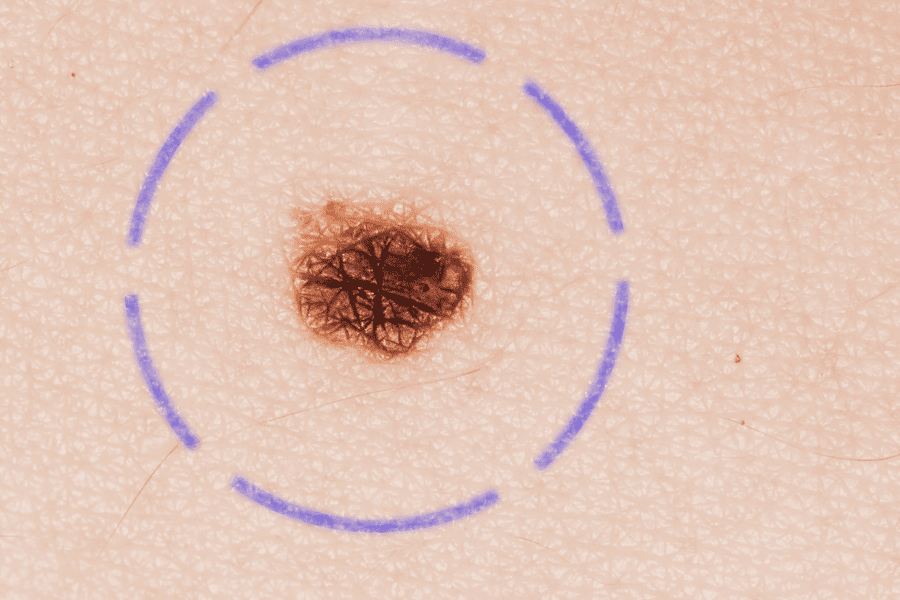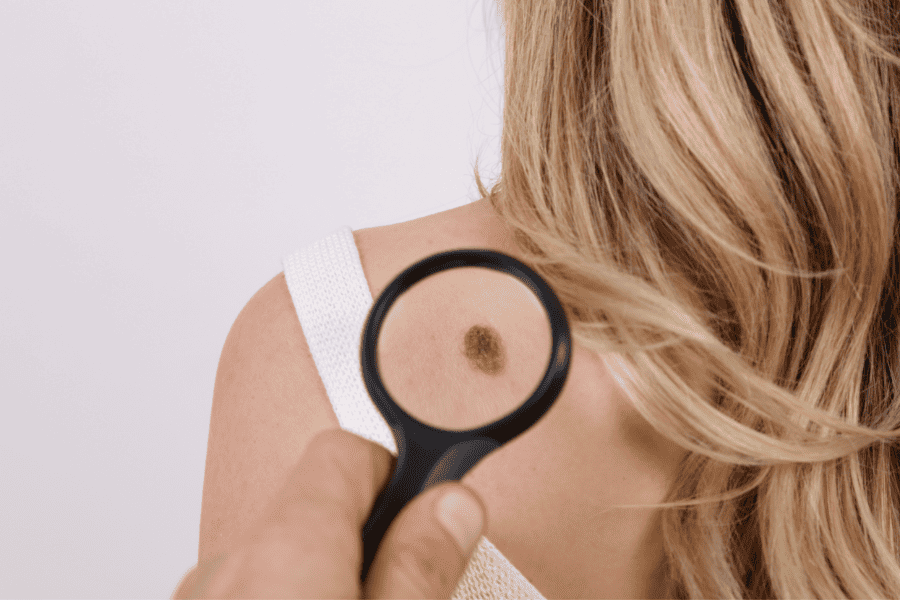Moles
Home » Medical Dermatology » Moles

What is a mole?
A mole is a brown or skin-colored bump on the skin. Moles appear in childhood or adolescence. Most adults have an average of between 10 and 40 moles on the skin. Some individuals are more prone to moles than others. Moles can appear in all areas of the body during any age. Over time, moles can slightly change or even disappear; however, this is uncommon.
What causes a mole?
Moles emerge when cells called melanocytes grow in a large group. Melanocytes give the skin pigment and are traditionally spread around the skin; moles appear when they grow in a cluster.
What are the different types of moles?
Congenital Nevi
Congenital nevi are moles, also known as birthmarks, appearing when you are born. Although these are common and seem large and abnormal, they are not harmful.
Atypical Nevi
Atypical or dysplastic nevi are another form of mole that contains atypical cells. Congenital nevi moles are considered precancerous. If these moles are not addressed, they may turn into melanoma. These moles are rated mild, moderate, and severe. Mild forms of this mole need to be regularly monitored by a doctor, whereas severe-level moles must be entirely removed.
Start your journey
to Beautiful skin!
Is there something that you should look for when examining your moles?
Most moles that you notice on your body are not harmful to you. You should be on the lookout for moles that look different from others and appear later in life, past the age of thirty. Moles can darken with sun exposure and when you are experiencing hormonal changes. Changes in moles should be tested or evaluated by a healthcare professional. Changes to look out for include growth, color changes, pain, itchiness, scaling, and bleeding.
While you examine the moles on your skin, it is vital to look at skin areas exposed to the sun. These areas include the hands, arms, chest, neck, ears, and face.
Signs of Melanoma
Knowing what to look out for when detecting abnormal moles is essential. At Clear Dermatology & Aesthetics Center we use the ABCDE method to help you indicate worrisome signs of melanoma. ABCDE signs can help you detect potential melanoma.
A: Asymmetry
If you look at a mole that does not appear symmetrical on both sides, this can be a tell-tale sign of melanoma.
B: Border
The borders of an early melanoma can appear abnormal. They may look like they have scallops or notches around them.
C: Color
Multiple colors appearing within a mole can be a sign of melanoma. Colors include brown, tan, black, red, white, and even blue.
D: Diameter
The size of melanoma can change rather quickly. They may be small when they are first noticed and can grow large in diameter. A doctor should evaluate moles with changing sizes.
E: Evolving
Any signs of evolution in a mole can indicate signs of melanoma. Moles traditionally stay uniform in size, shape, and color. New symptoms can be detrimental, including bleeding, elevation, itching, and crusting.
If you notice a mole with any ABCDE melanoma signs, scheduling an appointment with one of our dermatologists is vital.
If you draw an imaginary line through your mole and the two halves do not match, this could be a warning sign for melanoma.
The borders of an early melanoma tend to be uneven. The edges may be scalloped, notched, or irregular.
Having a variety of colors is another warning sign for melanoma. A number of different shades of brown, tan or black could appear. A melanoma may also become red, white or blue.
Melanomas can be larger in diameter than a pencil eraser tip (6mm), but they may sometimes be smaller when first detected.
Common, benign moles look the same over time. Be on the alert when a mole starts to evolve or change in any way. If you are concerned your mole is changing, please schedule an appointment to come see us right away for a skin check. Any change in size, shape, color, elevation, or another trait, or any new symptom such as bleeding, itching or crusting can point to danger and should be taken seriously.
Knowing the ABCDE warning signs of melanoma can help you detect a potential melanoma. If one of your moles has any of the ABCDE warning signs, please have it checked immediately with one of our providers.

